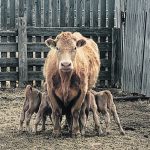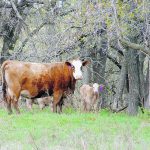Open rates were horrendous in Western Canada last fall: what can producers do to make sure history doesn’t repeat itself?
Glacier FarmMedia – Many beef producers got an unpleasant shock at last fall’s preg check, and experts are weighing in on what can be done to avoid a similar problem this year. According to a report from the Western Canadian Animal Health Network (WeCAHN), more than 40 per cent of some herds were found open. […] Read more
VIDEO: Cutting edge livestock feed research
Canfax report

New forage barley variety promises improved yields
AB Maximizer, a relatively new variety developed by Western Crop Innovations, also promises better disease resistance
WINNIPEG — Field tests across the Prairies have identified a new star in the world of forage barley: AB Maximizer. Results show the new variety has higher yields and stronger disease resistance and matures earlier than established varieties like CDC Cowboy. AB Maximizer is a relatively new variety developed by Western Crop Innovations, formerly known […] Read more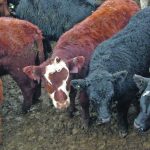
Respiratory disease linked to the gut
Scientists try to find out if giving calves a probiotic before they enter the feedlot will prevent bovine respiratory disease
WINNIPEG — Over the last decade, scientists and doctors have established a connection between gut health and brain health. They’re realizing that the community of bacteria within the intestine can influence mood, cognition, behaviour and other things that are normally associated with the brain. “The gut-brain connection is complex and bi-directional,” says the Cleveland Clinic […] Read more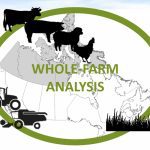
Ag Canada updates software that estimates emissions
Producers can input beef production information and pasture data to learn how to reduce greenhouse gas emissions
Agriculture Canada is updating the model that farms and ranches can use to estimate agricultural greenhouse gas emissions. The Holos model has been around since 2008, and its most current model, version four, since 2020, but the fifth version is now in development. At the Sustainability of Canadian Agriculture Conference, hosted by the University of […] Read more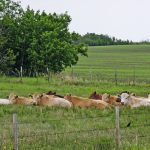
Where does your herd rank among cow-calf benchmarks?

Anti-predation program introduced in Manitoba

Poisonous plants can lurk in pastures
Livestock producers are advised to protect their animals by identifying plants that can cause acute or chronic poisoning
REGINA — Turning cattle onto fresh spring pasture can come with risks from the plants growing there. Some plants are acutely toxic and others cause chronic poisoning. These include weeds that have appeared during the last few years of drought as water body boundaries receded. Jennifer Hayden and Chelsea Siemens, livestock and feed extension specialists […] Read more